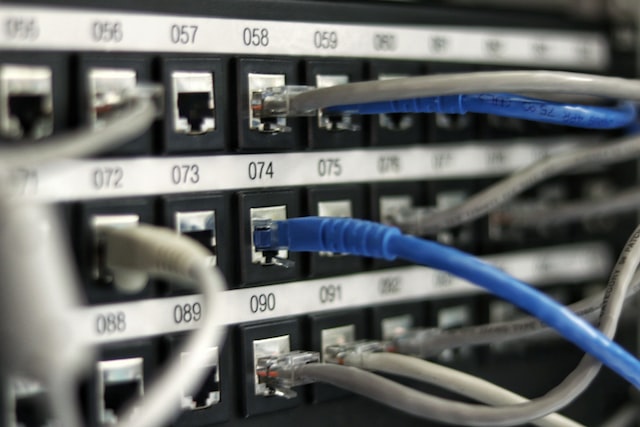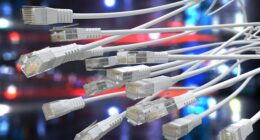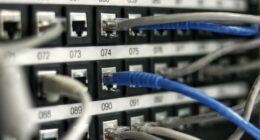Sockets and ports are two important components of networking connections. Sockets act as endpoints for two systems to communicate with each other while ports enable programs on a single system to use the same network connection.
What is a socket?
a socket is a software component that provides an endpoint for communication between two processes. A socket is identified by an IP address and a port number, and it is used to establish a network connection between two devices, such as a client and a server.
Sockets are a fundamental component of network programming and are used extensively in internet applications, such as web servers, email clients, and instant messaging services. Sockets allow these applications to communicate with other devices over a network, enabling data to be transmitted and received in real-time.
In a typical socket-based communication scenario, one process creates a socket and binds it to a specific IP address and port number. This process then listens for incoming connections from other devices. Another process can then create a socket and connect it to the first process’s socket. Once the connection is established, the two processes can communicate with each other by sending and receiving data through the sockets.
Sockets are typically implemented using a low-level programming interface, such as the Berkeley sockets API, which is available on most operating systems. Higher-level programming languages and libraries, such as Python’s socket module or Java’s Socket class, provide a more user-friendly interface to work with sockets.
What is a port?
(Photo By Linux Screenshots on Flickr)

When discussing computer networks, the term “port” refers to a logical connection point. A port is associated with an IP address of a host and the type of network protocol used for communication. There are two types of ports: physical and virtual.
Physical ports are the actual connectors on the back of your computer. For example, an Ethernet port looks like a large phone jack. Every device that connects to a network has at least one physical port. Virtual ports are software-defined and exist only in the configuration of the network equipment. They enable multiple logical connections to share a single physical port.
Ports are often confused with sockets. A socket is a combination of an IP address and a port number. It uniquely identifies each end of a connection between two hosts so that data can be routed correctly. A socket is like a mailbox where data goes in and out; it doesn’t care what kind of data it is or where it came from originally. All it does is move data from one place to another as quickly as possible.
Difference between socket and port
There is a big difference between a socket and a port. A socket is an endpoint of a communication channel. A port is an application-specific or process-specific software construct serving as a communications endpoint. It is not possible to have two processes running on the same machine using the same port number. However, it is possible for two processes running on different machines to communicate with each other using the same socket if they are both using the same protocol.
Why do we need both sockets and ports?
In computer networking, a socket is an endpoint of a connection between two computers. A port is a logical construct that identifies a specific process or application on a computer. Sockets and ports are used together to enable applications to communicate over a network.
Sockets provide the communication mechanism between two computers. A socket is associated with a specific port on a specific computer. When one computer sends data to another computer, it sends the data to the receiving computer’s socket. The receiving computer then forwards the data to the correct application by sending it to the corresponding port.
Ports identify the applications that data should be forwarded to. They are like telephone numbers in that they allow different applications on different computers to be identified and communicated with. Just as you can have multiple phone numbers for different people at your home, you can have multiple ports for different applications on your computer.
What are the types of sockets?
There are four types of sockets: Stream, Datagram, Raw, and Sequencepacket.
A stream socket is a type of socket that uses a reliable, connection-oriented protocol such as TCP. Stream sockets guarantee that the data will be delivered in the order in which it was sent.
A datagram socket is a type of socket that uses an unreliable, connectionless protocol such as UDP. Datagram sockets do not guarantee that the data will be delivered in the order in which it was sent.
A raw socket is a type of socket that allows direct access to the underlying communication protocols. Raw sockets are typically used for diagnostic or security purposes.
A Sequencepacket socket is a type of socket that uses a reliable, connection-oriented protocol such as TCP. However, unlike stream sockets, sequencepacket sockets do not guarantee that the data will be delivered in the order in which it was sent.
What are the types of ports?
There are three types of ports: Input, Output, and Bidirectional.
Input ports can only be written to by the CPU,
Output ports can only be read from by the CPU.
Bidirectional ports can be both read from and written to by the CPU.
What is the difference between socket and TCP?
When it comes to sockets and ports, there is often confusion as to what the difference is between the two. A socket is simply an end point for communication, while a port is a logical connection point for that communication. In order for two devices to communicate with each other, they need to be connected through a port. Once they are connected, they can communicate with each other through the socket.
How many sockets does a port have?
There are two types of ports: physical and logical. Physical ports are the actual holes in a computer or other device through which cables are inserted. Logical ports are the software-defined locations used to send or receive data across a network. Each type of port has a specific number of sockets.
A physical port can have anywhere from one to dozens of sockets, depending on its purpose and design. For example, an Ethernet port found on most computers has eight sockets to support the four pairs of wires required for standard Ethernet cables. A USB port usually has four sockets, two for power and two for data transfer.
Logical ports also come in different socket sizes. The most common type is an TCP/IP port, which uses two sockets — one for sending data and one for receiving data. Other logical port types include UDP/IP (one socket for each direction), SCTP/IP (four sockets), and DCCP/IP (two or three sockets).
Is socket TCP or UDP?
A socket can be associated with either TCP (Transmission Control Protocol) or UDP (User Datagram Protocol) in computer networking. TCP and UDP are two of the most commonly used protocols for transmitting data over the internet.
TCP is a connection-oriented protocol that provides reliable and ordered delivery of data between applications. It establishes a virtual circuit between two endpoints, and data is transmitted in a series of packets that are acknowledged by the receiver. TCP guarantees that data will be delivered in the order it was sent, and that it will be error-free. TCP is commonly used for applications that require high reliability, such as web browsing, email, and file transfers.
UDP is a connectionless protocol that provides unreliable and unordered delivery of data between applications. It does not establish a virtual circuit between endpoints, and data is transmitted in individual packets without any guarantee of delivery or order. UDP is commonly used for applications that require low latency and are tolerant of some data loss, such as video streaming, online gaming, and real-time communication.
In a socket-based communication scenario, the choice of TCP or UDP depends on the specific requirements of the application. If reliability and order of delivery are critical, then TCP is the preferred choice. If low latency and some loss of data are acceptable, then UDP may be a better choice.
What is the most common port?
The most common port used in computer networking is port 80. Port 80 is the default port for the HTTP (Hypertext Transfer Protocol) protocol, which is used for transmitting web pages and other content over the internet.
When you type a URL (Uniform Resource Locator) into your web browser, it typically begins with “http://” or “https://”, followed by the domain name of the website. The web browser then sends a request to the server hosting the website using port 80 (or port 443 for HTTPS) by default. The server responds with the requested web page or content, which is then displayed in the browser.
Port 80 is not the only port used for web traffic, as other protocols, such as HTTPS (HTTP over SSL/TLS), also use different ports. However, it is the most commonly used port for HTTP traffic, and many firewalls and network security systems are configured to allow traffic on port 80 by default.
Featured Image By – Photo by Jordan Harrison on Unsplash








